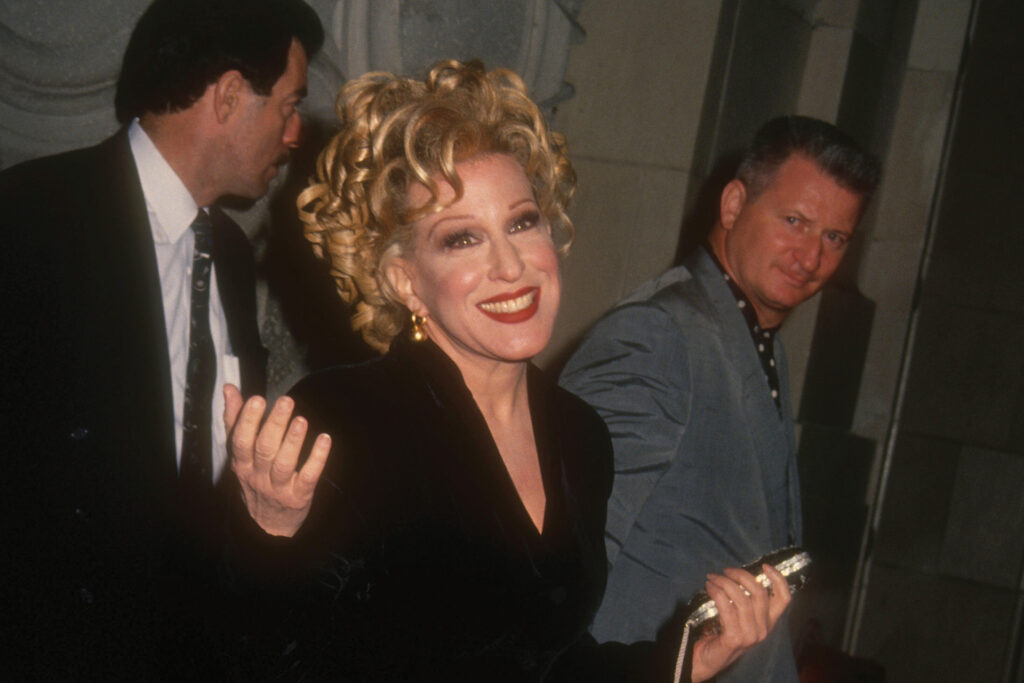Love is confounding and magical. Still.
By Kevin Sessums
Taking the Eurostar for a recent two-month stay in Paris from my four months in London, I was thinking about all those trips I took on Amtrak from Hudson, New York, to Manhattan and back over the five years I lived Upstate and the geographic love affairs I have had with all four places over the past 48 years since I first moved to New York City as a 19-year-old Mississippi boy to attend Juilliard’s Drama Division. I soon detoured from acting to a magazine career as a writer and editor and now, still writing and working on my third memoir, Beside Myself, I, having shed almost all my possessions, am living life as a pilgrim on a pilgrimage trying finally to love myself without vanity but with fairness. During that magazine career, I interviewed several actors who have homes Upstate with their wives or husbands, the kind of thespians unafraid of the need for a spring thaw even as they froze fame in its place to make the move when they, on kinds of pilgrimages of their own, mindfully decided they no longer had that other need for the star-making machinery of Hollywood and those who hover there to grease the machinery—among them are Bette Midler and her husband Martin von Haselberg, Claire Danes and her husband Hugh Dancy, Alan Cumming and his husband Grant Shaffer, Daniel Craig and his wife Rachel Weisz.
In 1991, I interviewed Bette Midler for a cover story in Vanity Fair. She and Martin have planted themselves Upstate on a beautifully designed estate where she can garden amidst the architecturally imagined landscape that enhances the wilder warrens about their property without showing it up, much like she and others of her highly recognized subset enhance the region itself without diminishing what has always been quaintly, quietly charming about it before their arrivals. When Midler described to me how her love for her husband deeply took root instead of arriving thrillingly like a vulgarly beautiful bouquet thrust into her life waiting to die on its stems no matter how expensive the vase she could find to put it in, she could have been explaining the rugged regality of New York’s mountain region, the pleasing playfulness of its light that does not come to play but has been inspiring artists since the mid-19th century when another kind of subset discovered this swath of real estate, where a determined kind of artful desire manifested as realism. Martin von Haselberg, a multi-disciplined artist himself who’s a former commodity’s broker, once playfully (that word again) described for Elle Decor the pool house he designed on their estate as its “mullet—all business in the front, party in the back,” which is rather the inverse of movie stardom, especially his wife’s version which was mothered by a wanton wit and a singing voice that incongruously waved a wand of woeful beguilement over it all and conjured Oscar nominations for her performances in The Rose and For The Boys as well as filled the corporate coffers at Disney with her string of grown-up comedies before she and her husband and lovely, talented daughter, Sophie, returned east to New York where she saved so many of New York City’s derelict parks and helped spruce up the joint because the Divine Miss M always had a determined desire herself to be a doyenne who does good.
Martin von Haselberg was, long ago, known as “Harry Kipper,” a member of the avant-garde performance duo called the Kipper Kids, whose act consisted of scatological good humor and whose costumes were nothing more than fake noses and chins, jockstraps and shaved heads. Indeed, when I interviewed Midler for Vanity Fair more than 30 years ago, von Haselberg was still shaving his head from time to time, though Midler found it quite unappealing. “It’s so sad,” she confessed. “It breaks my heart. I know it’s going to be another six months before I see his beautiful hair again. But he does it because he loves it—he doesn’t give a shit what I like. This is our relationship: I can’t put him in a corner, I can’t put him in a box.” Midler met von Haselberg in 1981 at a Los Angeles club called The Roxy, where they went with mutual friends to see a concert by King Crimson. Two years later, they ran into each other again at the Lhasa Club in Los Angeles and that time she gave him her home telephone number. One year later, he worked up the nerve to call her and they attended an Eric Bogosian performance. Six weeks after that, they were married by a part-time Elvis impersonator in a Las Vegas wedding chapel to the accompaniment of the soundtrack to Fellini’s Juliet of the Spirits. For the next two months, they lived in separate houses. “I hardly knew him!” is how Midler explains such a conjugal curiosity. When I met him, I was 38 years old,” she told me. “I wasn’t getting any younger. What else is there? Are men really that different after you’ve met so many men? After you’ve known so many? How different can they be? I married the best person who wanted to marry me. We are the perfect couple even though we go at it hammer and tongs. We’re solid together. When we were first married, he didn’t know how to fight. He spent his whole life with these Bohemian parents. People just didn’t raise their voice to each other in his world. And I only raise my voice—sometimes I astonish myself. He was not ready for that. We had a lot of trouble the first couple of years. We had a tremendous amount of trouble. He couldn’t understand why I would get so upset by things, and he couldn’t retaliate. But it’s all kind of evened out now. I’ve always said we got married because there was nothing on TV. Maybe deep down we were serious, but superficially we never said that this is forever, this is the ticket, we are committed to each other for life. I still ask him for a divorce every day. It clears the air.”
“Even though I didn’t know her at all,” von Haselberg told me during a lunch the three of us were having, “I remember consciously making the decision that no matter what happens I’m going to keep working at this to make it work. Even if it turns out that she’s not the person I think she might be, I’m just going to keep going through it and making it work.” I asked von Haselberg, the person who has known Bette Midler most intimately for decades now, if her distinctive brassiness was something she could put on like a piece of armor, or a pair of Loro Piana pajamas from the armoire. “What do you mean, ‘put on’?” he asked, surprised at the question. “That’s her! She’s just got a very big range, which makes it pretty exciting to live with. It keeps me on my toes all the time. This is not a languid life that I lead with her, believe me. It’s like being on a roller coaster I cannot get off.”
Midler chimed in, “Sometimes he accuses me of not being…uh…uh…comforting. That’s something I’ve had to learn. If I fail him in any way, that’s how I fail him. I shouldn’t be telling you this—this is so out-of-school—but the whole commodities thing began to take a terrible toll on him. He started to turn gray overnight. He was saying, ‘I can’t, I can’t, I have to quit!’ Meanwhile, I was saying, ‘When I married him, he had a job!’ I only sort of heard him with half an ear. Finally, he was so upset that I had to stop and pay attention. Sometimes you really have to turn the headlights of your life on… I learned a big lesson. We did this—got married—as a lark, but this is really, really serious. People’s lives are serious. People have needs. I was so caught up in my own…I don’t want to say neurosis, because I don’t like that word, really, but I was caught up in whatever my thing was. My career, my this, my that. Mine, mine, mine! Artists are selfish people, and I had to learn not to be quite so selfish. And I think it helps everything. It helps one’s art, because it brings balance to it and it brings perspective and it makes one quieter and able to judge in a less hysterical fashion.”
Perspective. Quieter. Less hysterical. When I went back and read this section of that cover story it dawned on me—moved me actually— that Bette and Martin are having the languid life in the tranquility of Upstate New York that they so diligently were determined to have together. I find it deeply romantic in the way the romance poets artfully tethered themselves to the sublime, to nature and, most importantly, to emotional balance. As Wordsworth wrote in the preface to Lyrical Ballads, a collection of his poems and those of Coleridge that marked the beginning of the Romantic movement, “I have said that Poetry is the spontaneous overflow of powerful feelings: it takes its origin from emotion recollected in tranquillity: the emotion is contemplated till by a species of reaction the tranquillity gradually disappears, and an emotion, kindred to that which was before the subject of contemplation, is gradually produced, and does itself actually exist in the mind.”
As the Eurostar pulled into Gare du Nord and I made my way to my little writer’s garret in the 8th Arrondissement where I now write this very sentence, I was thinking of an earlier visit to Paris when I was still executive editor of Andy Warhol’s Interview and my looking up Catherine Deneuve, whom I had interviewed for the magazine. We had instantly bonded over some childhood memories that involved our mothers’ illnesses and she continued her emotional seduction by giving me an address in Paris where I could visit her and a phone number she told me to call when I arrived. We had met on that once-upon-a-time New York afternoon in her room at the Hotel Plaza Athénée and I had started our conversation by asking her about her happiest and saddest childhood memories. “My happiest concerns my mother,” she told me. “My mother got very ill with tuberculosis when I was quite young. She had to go to the mountains for a year. I suppose my happiest memory is when she came back from the mountains because we really thought it was terrible. They didn’t manage very well to prepare us for my mother’s departure. It was done at night. Hiding. So that was my worst memory, my saddest.”
“So the worst is her going to the mountains but the best is her coming back?” I asked.
“Yes. The worst because they didn’t prepare us, my sister and me. She didn’t say anything. She just said she was going away for the night. But I saw everybody in the corridor crying. And I saw the luggage downstairs waiting by the car. And I shouted. I screamed. It is something I will never forget. But she got cured by going to the snow, going to the mountains. She had to be there for a year. We did go to see her once in the mountains on Easter, my sisters and me. I was seven.”
“Are you afraid of being abandoned now? Of being left?” I asked.
“I am afraid of being surprised. So I protect myself. I do avoid certain things and avoiding is a way of losing…”
“Spontaneity?”
“No, no, no. But trying to avoid situations in which I could be hurt, you know, is protecting yourself in a way that also protects you from the possibility of surprises, or good surprises.”
As I was making my way to my Parisian garret the other day on this part of my pilgrimage, I grinned at the memory of my own surprise when I arrived in Paris all those years ago with the address and phone number Deneuve had deigned to write in her own hand on a piece of Plaza Athénée stationery when she told me to make sure to contact her. The address turned out to be an office building and the phone number was a non-working one.
When people ask me what I have learned about love in all my travels and all my interviews and all my now 67 years of living, I tell them love to me is a lie told to me by Catherine Deneuve I am still longing to believe. Maybe that is why I am even back in Paris for these two months and why I am on the pilgrimage I am now on. But love is also—just look at the deeply rooted sort between Bette Midler and Martin von Haselberg—a kind of spring thaw, the need for it, the fearless need.












Comments are closed.